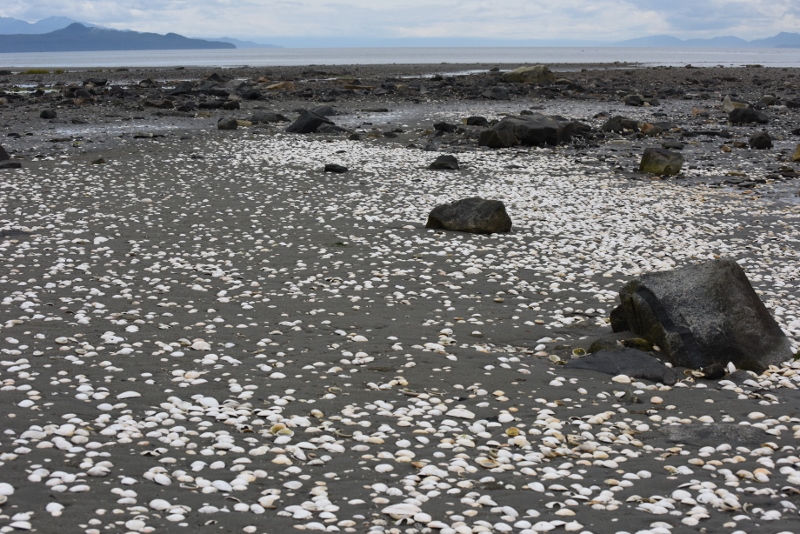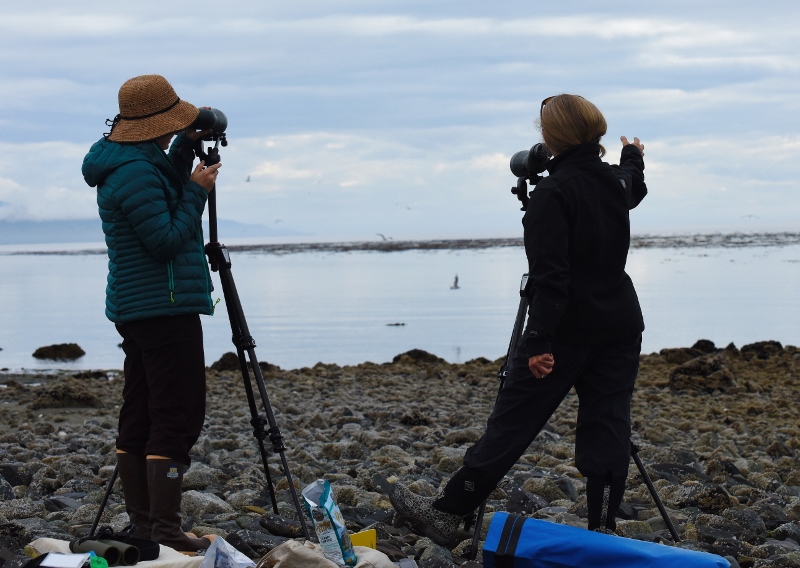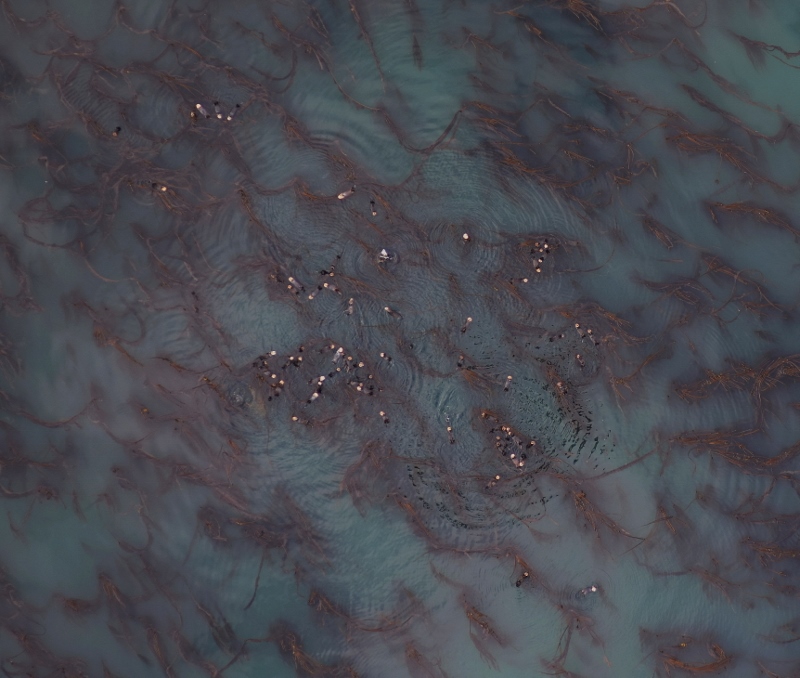Note: this blog post from 2016 has updated information available for reading here: https://www.nps.gov/im/sean/seaotters.htm

Sea otter resting near Boulder Island in Glacier Bay, July 19, 2016 (Photo: Jamie Womble/NPS)

Clams are a primary prey item of sea otters in Glacier Bay. (Photo: Jamie Womble/NPS)
Sea otters are a "keystone species" which means that they can exert top-down pressure via predation on sea urchins, which are grazers upon kelp. As urchin density decreases from sea otter predation, so does the grazing pressure on kelp and as a result kelp forests flourish in the presence of sea otters. These top down influences on prey nearshore prey species can result in changes in community structure including maintaining a more diverse nearshore ecosystem.

Lou Taylor-Thomas (NPS) and Carol Coyle (VIP) counting a group of 500+ sea otters near Point Gustavus, July 21, 2016 (Photo: Jamie Womble/NPS)
The NPS Southeast Alaska Inventory & Monitoring Network, Colorado State University, the USGS Alaska Science Center, Glacier Bay National Park, and the NPS Southwest Alaska Inventory & Monitoring Network recently initiated a study to better understand the spatial distribution, abundance, and colonization dynamics of sea otters in Glacier Bay National Park. This new research effort builds upon existing sea otter distribution and abundance data by using aerial photographic surveys with contemporary modeling methods to develop an adaptive monitoring framework that minimizes model uncertainty and maximizes survey efficiency. The project will provide a foundation for understanding the colonization dynamics of sea otters and their influence on nearshore communities in Glacier Bay National Park.

Aerial photograph of sea otters resting in kelp near Ripple Cove in Glacier Bay, July 6, 2016 (Photo: Jamie Womble/NPS)
Visit the Voices of Glacier Bay webpage and scroll down to Sound #8 to hear sea otters munching on shellfish in Glacier Bay.
For more information, please contact Dr. Jamie Womble (jamie_womble@nps.gov).
